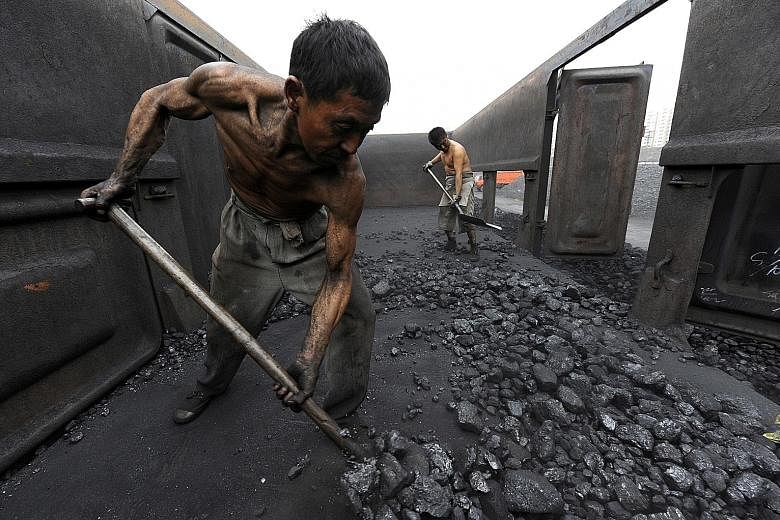BEIJING • Profits of Chinese industrial firms surged 31.5 per cent in the first two months of 2017 from a year earlier as prices of commodities from coal to iron ore raced higher, while strong imports also pointed to a pick-up in activity.
Stronger earnings could further boost fixed-asset investment, which quickened early in the year, and give China's "smokestack" industries more cash flow to start whittling away at a mountain of debt - a key government priority this year.
Total industrial profits over the first two months of the year were 1.01 trillion yuan (S$205 billion), the National Bureau of Statistics said in a statement yesterday.
The increase was mostly due to faster growth in prices of coal, steel and crude oil, said statistics bureau official He Ping, in a note.
The pace of profit growth picked up sharply from a 2.3 per cent increase in December.
Industrial profits rose 8.5 per cent last year, snapping back from a slight drop in 2015, largely due to a sharp increase in prices of coal as well as raw materials such as iron ore which were needed to help feed a construction boom.
China's economy got off to a strong start this year, supported by robust bank lending, a government infrastructure spree and a much- needed resurgence in private investment. The government boosted spending at the start of the year with outlays rising 17.4 per cent in the January-February period, compared to 12 per cent growth over the same period in 2016.
But investors in China are being torn between data showing a resilient economy and fears that expected policy tightening, while gradual, will eventually lead to higher borrowing costs and stunt business activity.
Producer prices rose at the fastest pace since 2008 in February on the back of stronger demand and government-mandated cuts in excess capacity. However, most economists and even the statistics bureau believe producer price gains may soon start to slow.
"The base effects are not going to be as flattering in coming quarters. We're going to see a decline in profit growth and producer price inflation from now onwards," says economist Julian Evans-Pritchard of Capital Economics in Singapore.
Meanwhile, on Sunday, People's Bank of China governor Zhou Xiaochuan said the country is preparing to further open its financial sector and signalled that doing so will involve negotiations over how other nations treat Chinese investors.
Areas of potential liberalisation include banking, insurance, investment banking, securities firms and payment systems, Mr Zhou told a gathering of Asian leaders at the Boao Forum for Asia.
"China is very interested to see that Chinese investors, especially private investors, should get better treatment overseas in other countries," he said.
REUTERS, BLOOMBERG

